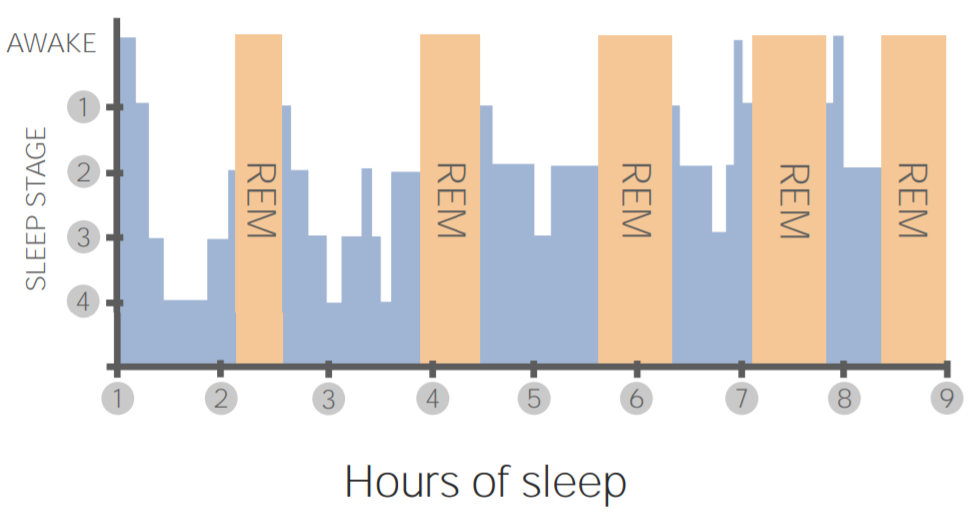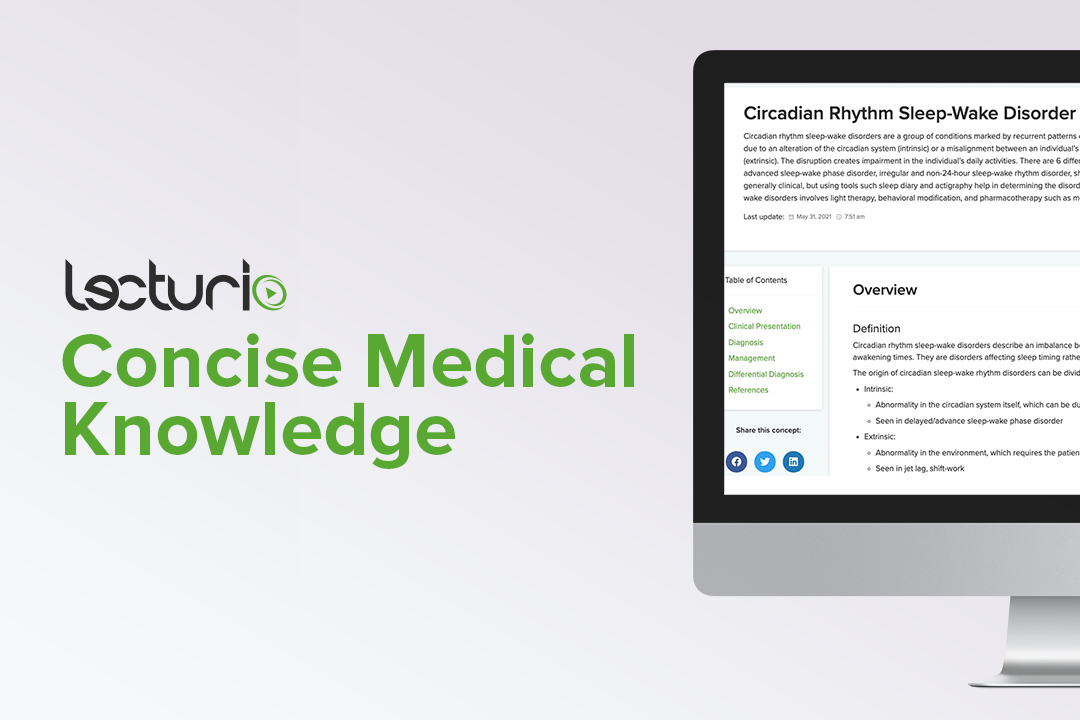Playlist
Show Playlist
Hide Playlist
Sleep Problems in Children
-
Slides SleepColicBreathHolding Pediatrics.pdf
-
Download Lecture Overview
00:01 In this lecture, I’m going to review some common behavioral problems in children. 00:06 Specifically, we’ll talk about sleep and sleep difficulties, infant colic and then breath holding spells. 00:13 So let’s start with sleep problems. 00:16 Normal sleep involves a circadian rhythm and cycles with rapid eye movement or REM, which are established at around three months of age. 00:27 Most infants should be sleeping through the night by around three months of age. 00:32 And when they’re not doing that, that’s usually the result of some sort of interaction with the child and the parent that’s facilitating a non-continuous night of sleep. 00:43 So part of it may be allowing co-sleeping. 00:48 Generally, allowing co-sleeping may delay a full night of sleep. 00:52 Not that this is necessarily bad for the child, but if it’s hard on the parent, there can be ways we can address this issue. 01:00 So let’s talk about sleep hygiene. 01:03 The first is patients should go to bed at a specific time and there should be a certain routine around the bedtime. 01:12 Rocking the baby to sleep may actually make the baby need rocking in order to go to sleep. 01:21 So what we typically recommend is that we do not rock the baby until they sleep and then put them down in the crib, but rather put them down in the crib awake with an expectation that now is the time to go to sleep and give them a kiss goodnight. 01:36 Oftentimes, it’s nice to have a routine around that. 01:39 So for example, you might read your child a book because reading is so important for infants. 01:45 And then you sit together and you cuddle. 01:48 And then you place them in the bed, kiss them goodnight, turn off the light and leave the room. 01:53 If we have a routine like this, the child knows they have to put themselves to sleep and if they wake up in the night, they don’t have to cry to be rocked in order to go back to sleep. 02:04 So another one is that we should have crib hygiene. 02:08 Crib hygiene isn’t about soap or cleaning the crib. 02:12 Crib hygiene is about keeping the sleeping conditions well. 02:16 So the baby should be on their back, not on their front and there shouldn’t be too many pillows and blankets around them. 02:23 This is important in preventing sudden infant death syndrome. 02:27 Co-sleeping with infants is also associated with sudden infant death syndrome. 02:32 So let’s review some common problems with sleep in children. 02:36 These are normal and just requires supportive care. 02:40 But let’s review the difference between nightmares and sleep terrors. 02:44 So nightmares can happen at any age. 02:47 Boys and girls get them in equal rates and they usually occur during REM sleep, which is when we’re dreaming. 02:54 This means that they’re usually occurring mostly on the last third of the night of sleep because REM is much more common in the last third of your sleep. 03:03 A child may awaken from a nightmare and be afraid and require consolation. 03:08 That’s okay. 03:10 The child would usually remember the dream or the episode the next morning. 03:14 This is different than a sleep terror. 03:17 And parents sometimes bring their children in thinking that sleep terrors are something bad when in fact they’re fairly common and aren’t really a problem outside of waking up the parent. 03:28 So these happen between the age of typically three to eight years of age. 03:33 They’re a little more common in boys than they are in girls. 03:35 And they typically happen in non-REM sleep. 03:38 This means not when they’re dreaming. 03:40 They may occur in the first third of the night as opposed to the last third, which is more common in nightmares. 03:47 The child may appear awake. 03:49 They may sit up and open their eyes. 03:51 They are not awake. 03:52 They’re still asleep. 03:54 And they can’t really be consoled. 03:57 The child will have no memory of this episode. 04:00 So the child will wake and sit up from bed, open their eyes, cry or scream, “No!” And then go back to sleep. 04:09 This is common. 04:10 It’s not hurting the child and they should be fine.
About the Lecture
The lecture Sleep Problems in Children by Brian Alverson, MD is from the course Child Development and Behavior.
Included Quiz Questions
Which of the following is a typical finding in children with night terrors?
- There is no memory of episodes.
- It occurs during the teenage years.
- It occurs during REM sleep.
- It occurs in the last 1/3 of the night's sleep.
- Children with night terrors can be consoled during an episode.
By what age are circadian rhythm and cycles established?
- 3 months
- 2 months
- 5 months
- 6 months
- 4 months
While addressing sleep problems in infants, which of the following is TRUE?
- Crib hygiene is important to prevent SIDS.
- Routine bedtime is not important.
- Rocking before and after sleeping can help.
- Co-sleeping should be promoted.
- Sleeping problems need no management.
When do nightmares occur during sleep?
- During REM sleep
- During non-REM sleep
- The first 1/3rd part of sleep
- Girls < boys
- Children of 3–8 years age
Customer reviews
5,0 of 5 stars
| 5 Stars |
|
5 |
| 4 Stars |
|
0 |
| 3 Stars |
|
0 |
| 2 Stars |
|
0 |
| 1 Star |
|
0 |






